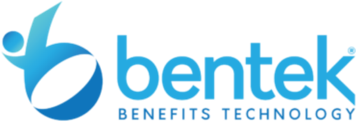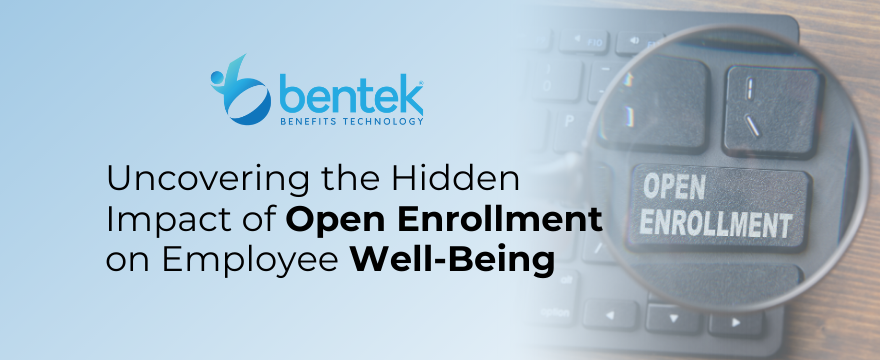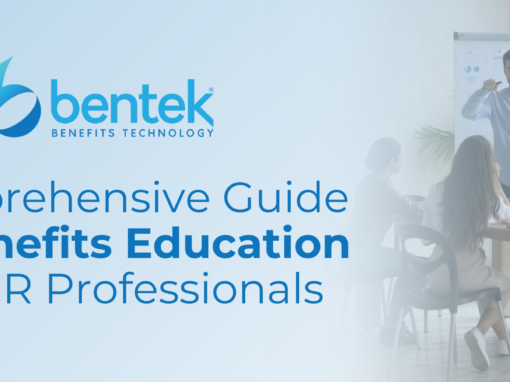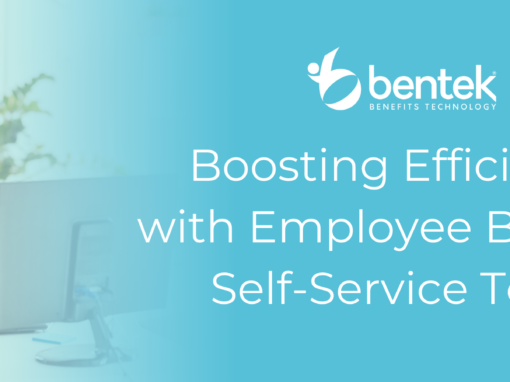Open enrollment is a crucial time for employees to make decisions about their health insurance and other benefit coverages. Even though these elections are important, for some employees there may be a hidden impact of open enrollment on their physical and financial well-being.
The Hidden Impact of Open Enrollment:
Physical well-being
Having access to affordable and comprehensive health insurance can help employees stay healthy and prevent diseases. Employees who are able to get the preventive care they need, such as annual physicals and screenings, are more likely to detect health problems early when they are most treatable. This can lead to better health outcomes and lower overall healthcare costs.
Employees who do not have adequate health insurance may delay or forgo needed medical care, which can lead to serious health problems and higher costs down the road. For example, an employee with diabetes who does not have health insurance may delay getting insulin or other medications, which can lead to complications such as heart disease, stroke, and blindness.
Financial well-being
The cost of health insurance and other benefits can be a major financial burden. Employees who choose the wrong benefits could end up paying too much in premiums and out-of-pocket costs.
On the other hand, employees who choose the right benefits can save money and improve their financial well-being.
Some examples: Healthy employees may prefer to pay less premium and save pretax dollars on the high-deductible health plan (HDHP) with a health savings account (HSA). Whereas, employees with a chronic health condition may prefer the security of a preferred provider organization plan (PPO).
The importance of careful consideration and planning
Given the significant impact open enrollment choices can have on an employee’s physical and financial well-being, it is important for employees to carefully consider their options and plan ahead. Employees should start by taking the time to understand the different benefit plans offered by their employer. They should also consider their own needs and budget when making decisions about which plans to choose.
Here are some tips to help employees make informed decisions during open enrollment:
- Start early: Don’t wait until the last minute to think about your open enrollment choices. Give yourself plenty of time to review the plans offered and compare costs and coverage.
- Educate yourself: Attend benefit presentations offered by your organization.
- Understand your needs: What are your most important health and financial concerns? Consider your current health status, any chronic health conditions you have, and your family’s needs. You should also think about your budget and how much you can afford to pay in premiums and out-of-pocket costs.
- Compare plans: Once you understand your needs, compare the different plans offered by your employer. Consider the following factors:
- Cost: How much will you pay in premiums and out-of-pocket costs?
- Coverage: What services are covered? What are the deductibles, copays, or coinsurance?
- Prescriptions: How will the medications you need be?
- Provider network: Do your preferred doctors and hospitals participate in the network?
- Ask for help: If you need help understanding your benefit options or choosing the right plans, don’t hesitate to reach out to your HR department. HR staff can help you make informed decisions that are right for you and your family.
By carefully considering the options and planning ahead, employees can make open enrollment choices that will lead to improved physical and financial well-being.
For more articles like this, check out the Bentek Blog




